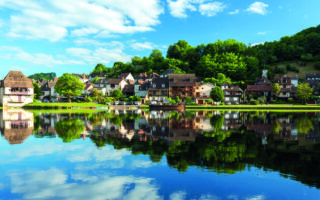French Property Location Guide: Somme
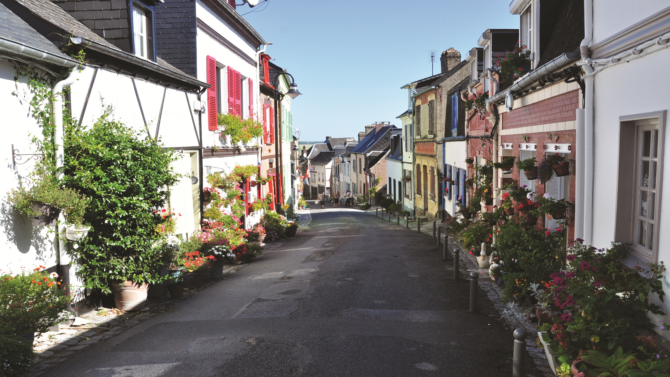
Sarah Daly discovers the rich natural beauty, history and cultural treasures to explore in the Somme…
Unless you know this strikingly beautiful part of France, with its wide skies, wealth of wildlife and interesting architecture, it is quite possible that the name brings to mind the senseless destruction and waste of life of the First World War. While the sobering history of the Somme is sensitively commemorated here, at sites like the Thiepval Memorial and Péronne’s Museum of the Great War, this coastal region has a huge amount to offer if you’re looking for a place to call home.
The first thing that struck me when I visited the Baie de Somme, the large wetland area where the River Somme meets the English Channel, is the sheer abundance of life. Nature is thriving here, in part because of the protection and ongoing care afforded to the area, a regional park since 1994.
My partner and I took a day trip from our home in neighbouring Pas-de-Calais and hired electric bikes at the station in Noyelles-sur-Mer. This is served by a steam train that takes you around the bay from Le Crotoy, through Noyelles to St-Valery-sur- Somme and on to Cayeux-sur- Mer. Cycling was the perfect way to explore and winding our way around the bay, we saw spoonbills overhead and little egrets circling the wetland. Later on, a hare bounded away through a wheat field dotted with poppies and a deer stood completely still on the quiet country lane ahead of us.
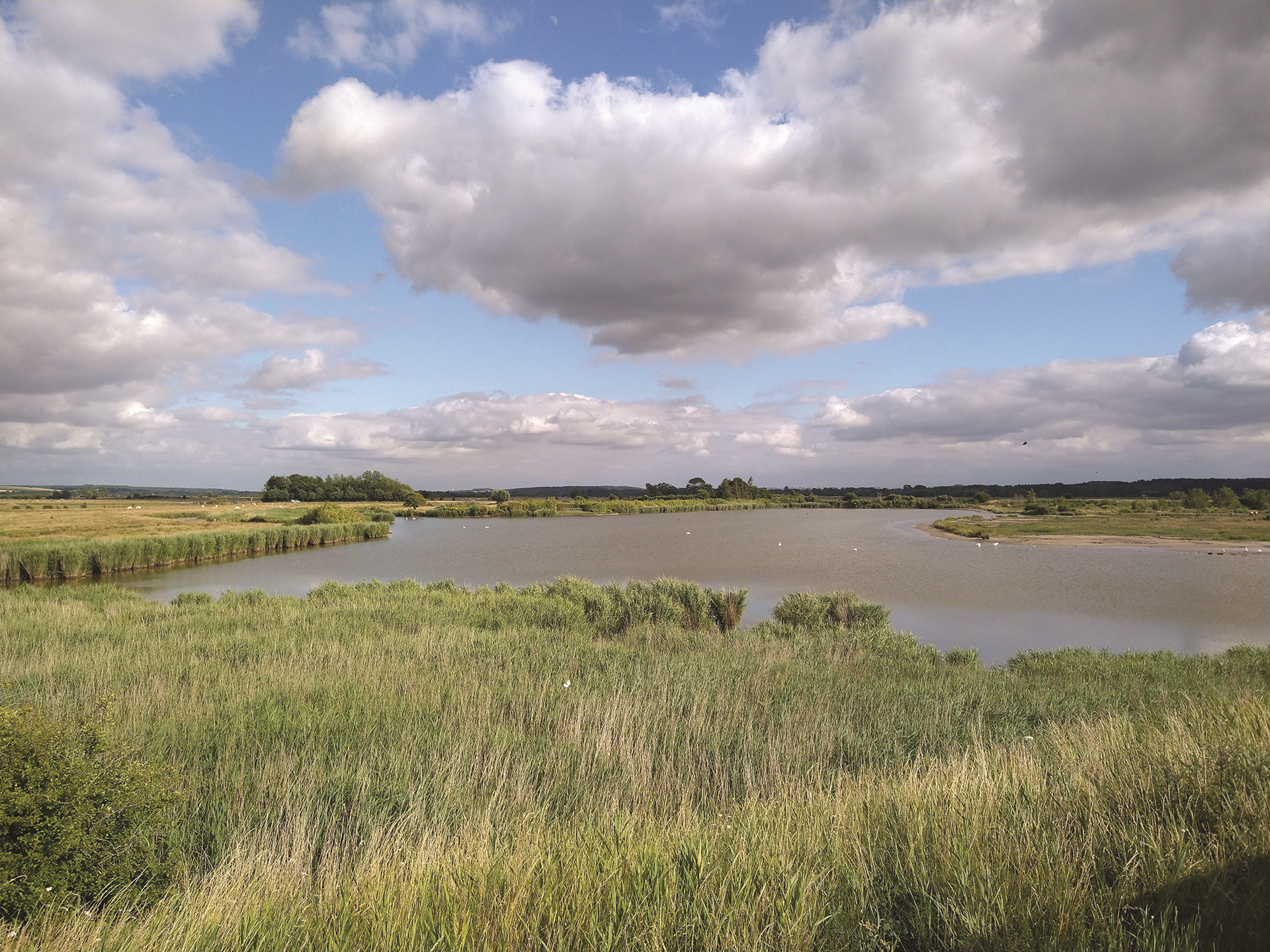
Baiede Somme, Photo: Shutterstock
BATHING BEAUTY
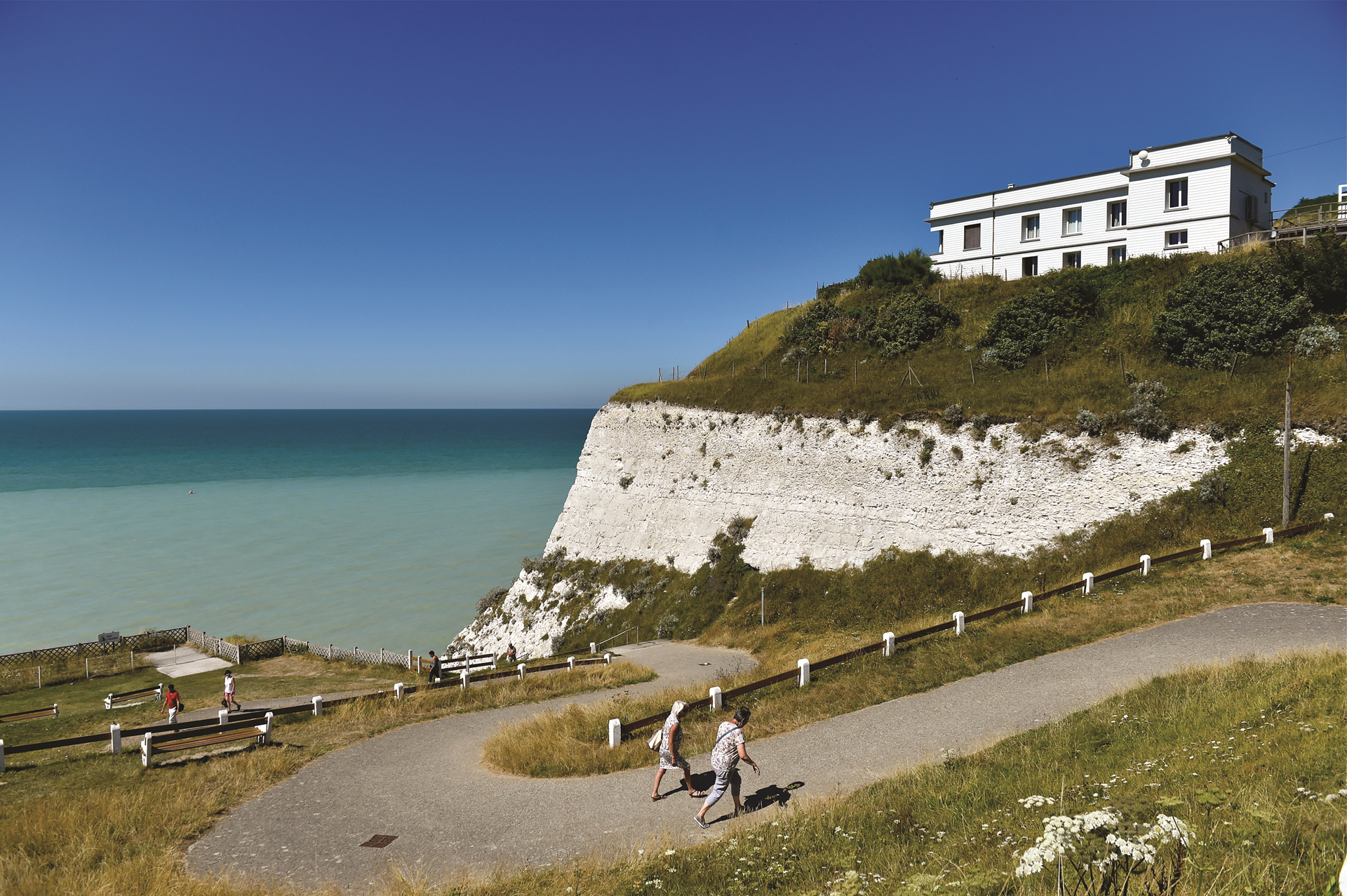
BOIS DE CISE Panorama, Photo: Shutterstock
The Picardy coast here faces west and the sunsets can be spectacular, but the pretty seaside town of Le Crotoy has northern France’s only south- facing beach. As such, it’s a popular holiday destination with great restaurants, interesting shops, as well as sheltered sands.
Further down the coast is the elegant town of Mers- les-Bains. This 19th-century fishing village rapidly grew into a hydrotherapy resort once the railway arrived on its shores. Today it is a colourful mixture of 19th and early-20th-century architecture with a wide beach sweeping round to dramatic chalk cliffs. A gentle hour-and- a-half’s stroll around the coast is a testament to 19th-century confidence and ambition.
Bois de Cise was a very rare example of deciduous coastal woodland and, until the arrival of Parisian wine merchant Jean-Baptiste Theulot in about 1896, it was almost wild and used occasionally as a hunting ground. Not only did Theulot parcel the land up into saleable lots to be cleared for villas, he also blasted away a sizable chunk of the chalk cliffs to create a new beach for bathing essential for the fashionable resort he had in mind.
He modelled his new rural retreat on Le Vésinet near Paris, but before the casino he planned on the beach could be built, and with just a few Belle Epoque villas completed, work stopped when war broke out in 1914. Now the site is protected from development and the few homes that exist there are highly sought after.
BUYING LOCALLY
Carola Petilleon runs Côte et Baie, an estate agency that covers the Picardy coast and its hinterlands. People move here, she tells me, because it offers such a natural, wild landscape and a great quality of life. “You’re in the heart of nature,” Carola says. “The area is managed for wildlife, added to which new cycle paths are being created and there are already plenty of ways to immerse yourself in nature.
“More and more local producers are offering organic food, meaning you can eat lamb that has been raised in the salt marshes, seafood caught here in the waters of the bay, vegetables grown on the rich soil and cheese made on local farms.”
Many British buyers move here to run businesses, with plenty of scope for new tourism offers in Carola’s view. “There are definitely opportunities, whether it’s bed and breakfasts, tea rooms or shops. In terms of properties, the prices vary considerably. Slightly inland from the coast, you can get a three-bedroom family home ready to move into for about €250,000, or a character house in need of updating, with land, for about €150,000.
“The Baie de Somme is more expensive and you can expect to pay between €500,000 and €600,000 for a house in St-Valery with a sea view. We find that around 80% of the properties we’re selling now are for second homes,” she adds. “Prices have risen as people move out of cities such as Paris and Lille because they’ve realised they can continue to work from home after Covid, commuting occasionally, and enjoy a better quality of life.
“Despite being so immersed in nature, the area is very well connected. You’re only two hours from the UK, Belgium and Paris so it’s a feasible option for British, as well as French buyers.”
Pippa Darbyshire is an artist who has made the Somme her home. “My sister moved here when her husband got a job in Amiens,” she says. “My husband Peter and I visited and fell in love with it. I started painting the bay and held an exhibition locally and then we bought the big derelict station hotel in Noyelles. That was 20 years ago. We restored it, running it as a café for a while, impressive cathedral remained largely undamaged. It’s one of the most complete Gothic cathedrals in France, and took almost 50 years to build in the 13th century. It underwent an extensive restoration in the 19th century and is remarkable for the quality of light inside the building, as well as its impressive architecture.
The area of St-Leu was the industrial heart of Amiens for the production of woad and velvet and it has some of the city’s oldest buildings backing onto its canals. Once the industry declined, however, it succumbed to neglect, although you’d never guess it if you visit today.
A THRIVING SPOT
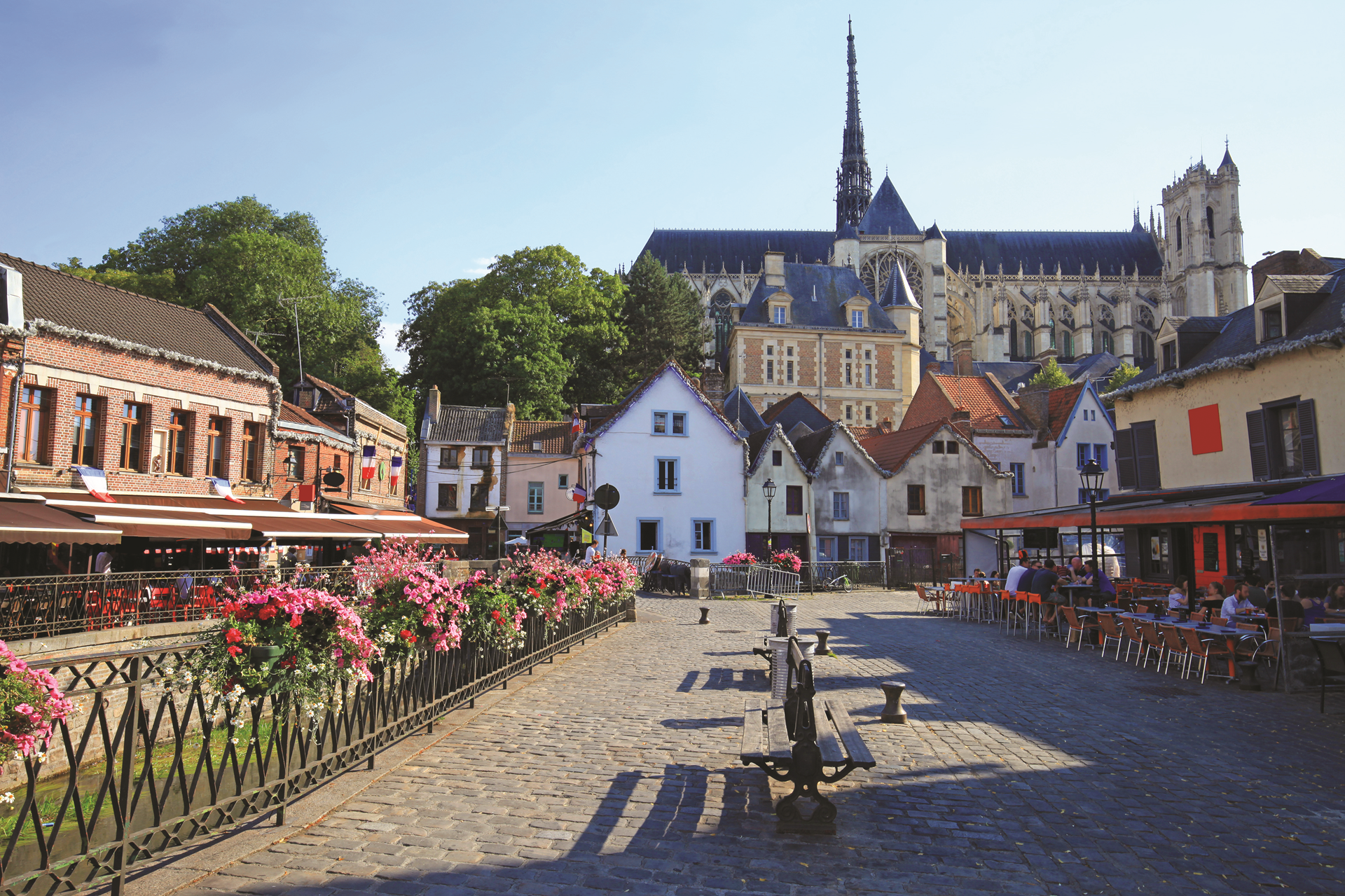
Amiens, Photo: Shutterstock
Locating the university in this area brought students and life back to it and now it is thriving and well maintained and is the perfect destination for a long lunch. We chose Le Quai, within sight of the cathedral and alongside the canalised River Somme. The meal was delicious. My swordfish steak was cooked to perfection and was followed by the best crème brûlée I’ve ever eaten and, having lived in France for four years, I consider myself something of an expert on this particular dish.
Amiens is a great place to live. It has all the advantages of a city, yet it’s still close to the countryside and only an hour by train from Paris. In some streets in the Quartier Anglais, you could easily be in England, even down to the bay windows and red phone boxes, while Henriville has an altogether more elegant and European feel. It’s in this part of the city that homage is paid to one of its most famous inhabitants, Jules Verne. A prolific author of classics such as Voyage to the Centre of the Earth, his home here is now a museum dedicated to his extraordinary life and work.
WATER GARDENS
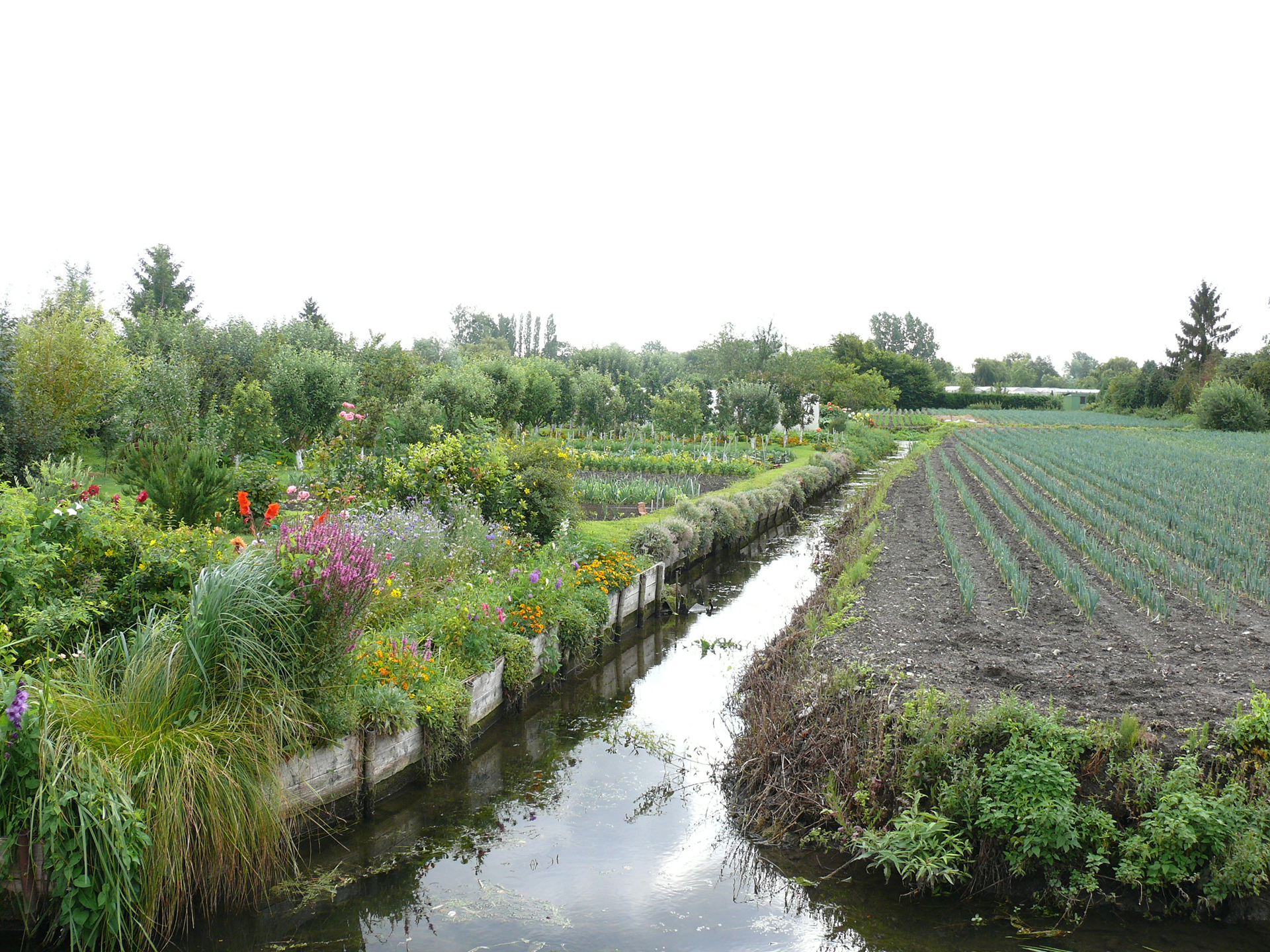
Les Hortillonnages d’Amiens, Photo: Claude Villetaneuse/Wikimedia Commons
Amiens feels very connected to nature. A unique area, called Les Hortillonnages, offers a series of ‘floating’ gardens in a huge wetland area spanning nearly 750 acres. This patchwork of canals and long, thin plots dates back centuries and was restored a few years ago. In typically French fashion, it is now a mixture of public spaces, commercial market gardens, private havens and allotments. The result is glorious. You pass wildflowers, efficient rows of vegetables and even a hunting lodge for shooting ducks. You can moor your ‘barque’, one of the traditionally made boats you can rent nearby, and step onto dry land to explore public art, wild planting and picnic areas.
This is a world apart, however, and during our gentle glide through the waterways, in an electric barque that doesn’t disturb the wildlife or our sense of calm, we hear nothing to remind us that we’re close to a thriving city. Instead, we watch families of crested grebes bustle about their business and pass a heron so still that I think it’s another sculpture until it suddenly stabs its beak into the water. Another highlight is the flash of electric blue as a kingfisher successfully snatches a small fish just ahead of us.
The more we explore this fascinating part of France, the harder it is to imagine that one of the bloodiest, most infamous battle fronts ripped through it from north to south throughout World War One. Today it’s a thriving, beautiful and peaceful place. If you want a home that immerses you in nature, connects you to a rich culture and fascinating history – and one that offers you real quality of life – the Somme could have exactly what you are looking for.
Looking for more like this?
Every issue of French Property News delivers in-depth regional buying guides, sound and trusted advice from leading experts, inspirational real life stories, renovation tales and lots of lovely properties to browse.
Lead photo credit : St-Valery-sur-Somme, Photo: Shutterstock
Share to: Facebook Twitter LinkedIn Email
More in Location guide, Somme
By Sarah Daly
Leave a reply
Your email address will not be published. Required fields are marked *


